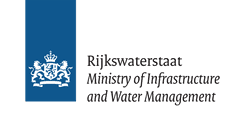As a result of climate change we increasingly see longer periods of drought or, on the other hand, extreme rainfall. This has a great impact on farmers on sandy soils. Clay soil enhances the resilience of sandy soil, strengthening its capacity to handle extreme weather conditions. Clay can also increase the fertility of sandy soil. In the LIFE CO2SAND, Rijkswaterstaat, (the Dutch Directorate-General for Public Works and Water Management) and the Province of Gelderland match the supply and demand of clay soil. We are applying the ‘clay-in-sand’ principle in demo fields. Farmers, area managers and land designers are welcome to visit these ‘field labs’ and make use of this technique for their own soil.
LIFE CO2SAND
Using clay to make farmland climate proof

700 hectares of climate-proof agricultural land by 2027
We transport clay that is released in creating nature areas and in building roads and houses, to drought-prone sandy soils of farmers.
The approach:
| We assess the quality of a parcel. Together with the farmer we determine which clay is most suitable and how much clay we need to sustainably improve their soil. |
| We work with demo fields. Each demo field is different and each farmer works differently. This enables us to gain experience with different local circumstances, clay types and ways of applying the clay. |
| On the demo fields we measure how much extra water the soil retains through the clay, and the change in soil fertility. We also measure differences in organic substance levels between the treated fields and untreated soil. |
| We engage with policymakers and land developers responsible for clay releasing projects to promote the inclusion of clay delivery to farmers in planning studies and tendering procedures. |
| We share knowledge with farmers, researchers and authorities by publications, demo days, congresses and calls. |
| We develop education kits for business consultants and agricultural schools. |
We assess the quality of a parcel. Together with the farmer we determine which clay is most suitable and how much clay we need to sustainably improve their soil.
We work with demo fields. Each demo field is different and each farmer works differently. This enables us to gain experience with different local circumstances, clay types and ways of applying the clay.
On the demo fields we measure how much extra water the soil retains through the clay, and the change in soil fertility. We also measure differences in organic substance levels between the treated fields and untreated soil.
We engage with policymakers and land developers responsible for clay releasing projects to promote the inclusion of clay delivery to farmers in planning studies and tendering procedures.
We share knowledge with farmers, researchers and authorities by publications, demo days, congresses and calls.
We develop education kits for business consultants and agricultural schools.
What results do we have?
- In 2021 we started with 5 demo fields; 4 in Gelderland and 1 in Brabant. In 2023 a demo field was added in Overijssel.
- Meanwhile, 1 or more layers of clay have been applied to 143 plots with a total area of 450 hectares. The target is 700 hectares by 2027.
- On 65 hectares, the target of 8% lutum in topsoil has been reached.
- Soil fertility has demonstrably improved: higher binding capacity due to a larger clay-humus complex (CEC, Cation Exchange Capacity).
- Better resistance to leaf yellowing disease observed.
- The acidity decreases, making the soil more fertile.
- Roots actively seek the clay: rooting is visible in clay clods. The crop absorbs water and nutrients from the clay.
- The treated plots are considered more climate-robust because they can retain more organic matter thanks to the clay.
- Already, nearly 85,000 m3 of clay soil has been high-value reused for agriculture.
- Since 2021, we organised 14 demo days and received a total of over 500 farmers on the demo fields.
- In the long term we can expect an extra retention of 1.9 tonnes of CO2-equivalents per hectare per year.



